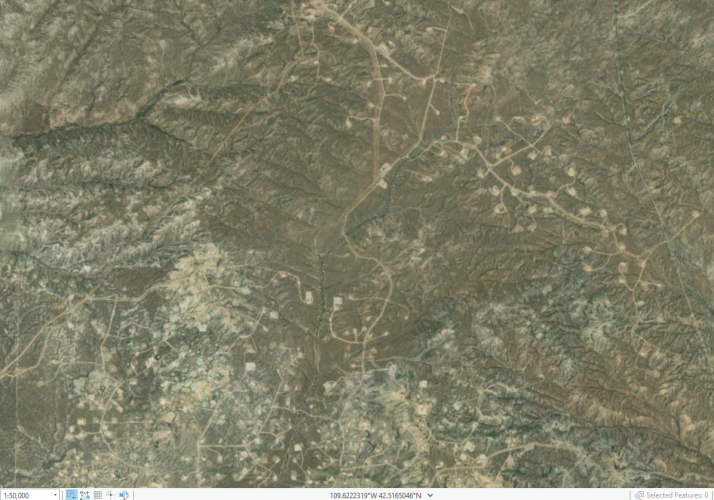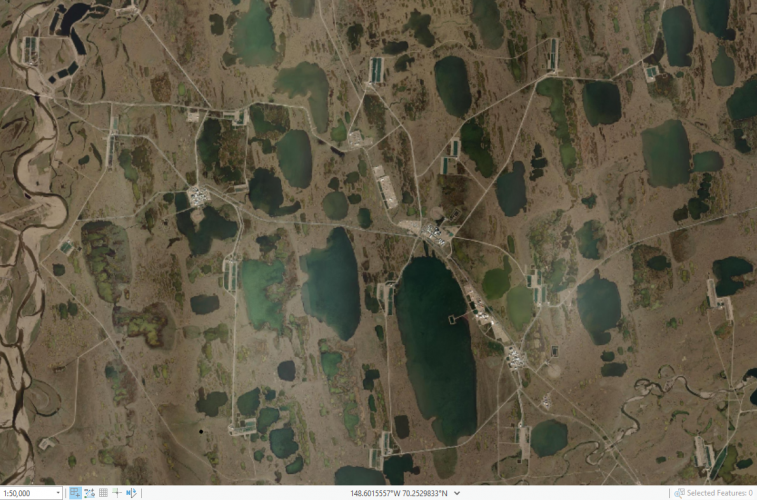I've seen some research that suggests PB had a limited effect on the caribou herds.Everyone that worked in and travelled through the Pinedale Anticline said the exact same thing regarding MD and pronghorn on the winter range. "Doesn't bother them, I see them all the time standing on the side of the rig roads and well pads". Hell, even I used to say that. Kevin Montieth's research showed that is does bother them. Alot!
Navigation
Install the app
How to install the app on iOS
Follow along with the video below to see how to install our site as a web app on your home screen.
Note: This feature may not be available in some browsers.
More options
You are using an out of date browser. It may not display this or other websites correctly.
You should upgrade or use an alternative browser.
You should upgrade or use an alternative browser.
Really good ANWR podcast
- Thread starter 44hunter45
- Start date
You are in O&G so I am sure you are aware that one dry hole doesn't mean much and that drilling a hole gives you alot of information that you wouldn't have otherwise. Making a big deal of the Checron well is laughable and means exactly nothing about the potential of the proposed area other than there were no HC found at that site.I dug into this a bit more and tried to educate myself.
Interesting assessment.
Here's what stands out to me.
1. 84% of the resources is in the NW, shall we say third of unit 1002
2. Test well is on private/ Native Corp lands, it's on the other side of the Anticline which is the line of basically Good / Bad recovery potential
3. During the lease sale there were few bids, of those that did bid, no one bid on the east of the Anticline leases
4. The state of Alaska knows the Chevron well results, there was a lawsuit... state won, but only a couple of geologists at the State are allowed to know the results.
5. So neither the State who knows the results, nor Chevron bid on the Eastern Leases + Chevron has not tried to drill on the Native Corp lands. That says to me that well is a dry hole, if it had revealed huge oil reserves they wouldn't be keeping it secret and either they or the state would have bid on those leases.
6. Given the number of Exploratory wells near lease 29 I bet people have some idea of the reserves, closest to the unit 1002 Boundary. At least enough to weigh the PR nightmare versus $.
View attachment 189861
View attachment 189739
Seems like it's possible the best part of the play is outside of the calving area...
View attachment 189864
As I mentioned above many dry holes were punched around Prudhoe before the struck oil and proved out the reservoir. The same thing with today's technology is going on in Guyana with Exxon. Some wells have proved up economical and some havent.
You really can't compare the Pindale anticline with ANWR. For starters Pindale is a coal bed gas play which requires high pad densities . The concerned species are different as well.I remember those statements well. I remember the statements that the development would be done in a way that mule deer wouldn't be displaced, and pronghorn would thrive as would grouse. Then the mountain of exceptions for the developments came, and all got approved. The Jonah & Anticline play tell us exactly what happens when we nuke critical areas for O&G. If the calving grounds are developed, the herd dies off.
Last edited:
D
Deleted member 28227
Guest
Just so we are on the same page, in this thread I'm not pro/against ANWR, I'm simply speculating on what is happening and the reasoning behind it... which IMHO was the stance of those in the podcast.You are in O&G so I am sure you are aware that one dry hole doesn't mean much and that drilling a hole gives you alot of information that you wouldn't have otherwise. Making a big deal of the Checron well is laughable and means exactly nothing about the potential of the proposed area other than there were no HC found at that site.
As I mentioned above many dry holes were punched around Prudhoe before the struck oil and proved out the reservoir. The same thing with today's technology is going on in Guyana with Exxon. Some wells have proved up economical and some havent.
Agreed, it is part of Exploration, exploration requires a lot of up front capital. Yes, exactly an enormous amount of money had to be spent to prove up the project, then build the infrastructure to develop it; tens of billions were sunk into the project.You are in O&G so I am sure you are aware that one dry hole doesn't mean much and that drilling a hole gives you alot of information that you wouldn't have otherwise....As I mentioned above many dry holes were punched around Prudhoe before the struck oil and proved out the reservoir.
This is my read.
Below are what the major players and what are doing, all of them except for Hilcorp which is private, have recently had a lot of turmoil with activist investors, to the point of removing directors of the company. All of the big public AK companies have had this happen, there as been a big push at these companies to message reducing carbon footprint and environmental impact. Not only is ANWR politically bad, but per the Trump Congressional report, which lets be honest did a lot of embellishment, said gas development wouldn't be economic meaning flaring, eliminating flaring is the #1 way companies reduce emissions.
I'm not really looking at the smaller companies as by every account this project will take billions to develop, and 10 years to see first oil. No small private company is up to that. A 500MM drilling budget is huge for a private company.
Exxon
"During the year, 478.9 net exploration and development wells were completed in the inland lower 48 states....Participation in Alaska production and development continued with a total of 2.7 net development wells completed." Exxon seems to be maintaining the asset but not putting much money to work in AK, they are farming out there undrilled leases. Exxon has flat out said Alaska just isn't as profitable as their other assets.
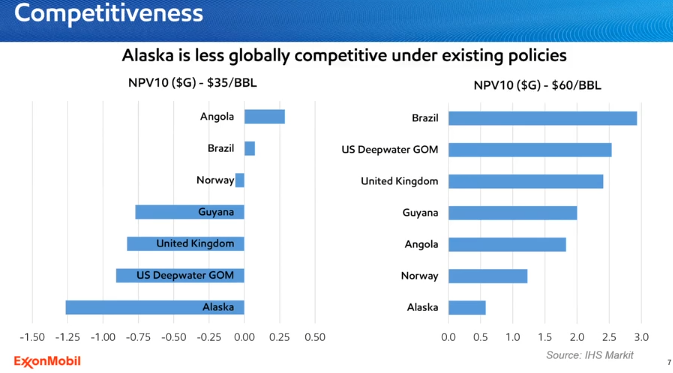
From Alaska Resources Conferences - Darlene Gates, Exxon Mobile Alaska
Presentation 13:40
BP -> Hilcorp
Sold to Hilcorp and left Alaska Hilcorp is a private company and has plans to run rigs on their BP assets. That said they typically work on mature assets not develop them; "Hilcorp acquires conventional oil and gas assets, enhances production, and improves efficiency and safety." Per there website they had 340,000 BOED, and only reinvested $340MM, a company that has 40,000BOE could budget that much for drilling, and still return money to investors.
ConocoPhillips
Focusing on the other side of the Dalton highway on their Willow project. Estimated $3 Billion to develop/explore $3 Billion to Drill. They have said they are budgeting ~ 1 Billion a year with first oil projected to be in 2026. This seems like a bolt-on project to current activities, where they would be connecting to relativity close existing infrastructure ~ 20 air miles from where they currently have a rig. Lots of wells in the area, 3D seismic, etc. That project also doesn't have name recognition with the public and Biden administration gave it the go ahead.
Chevron - Couldn't find much.
When we discuss this topic I always think about Bambistew's comment a while back about people in AK having the right to jobs and livelihoods. It's a fair point.
I think it's also a fair point that as much as one might want to blame the decline on R v. D politics, Alaska is also just far away, it has high taxes, and it's just a hard climate to operate in, and there has been a ton of oil discovered in the lower 48.
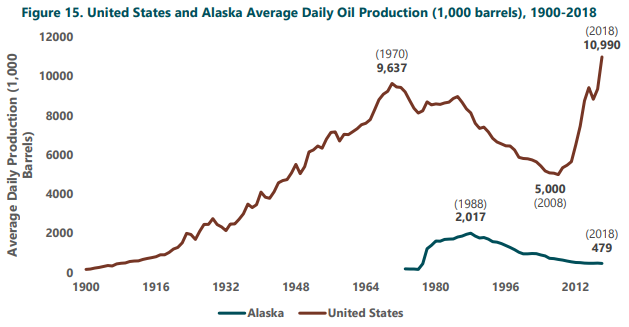
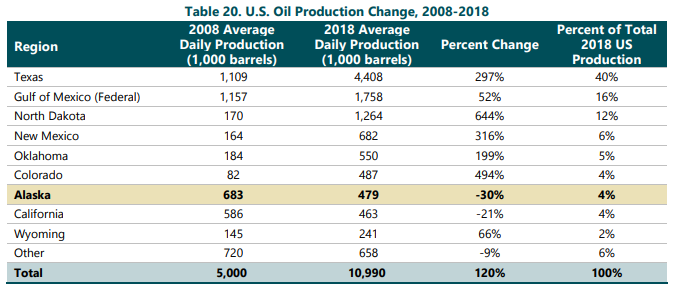
Last edited by a moderator:
D
Deleted member 28227
Guest
@BWALKER77 also I work in unconventional shale, in my 10 years I've never worked at a company that drilled a dry hole, uneconomic well definitely. It's one of the reasons operators like shale, very low risk of dry holes, quick returns on your investment. The upside is not as great as conventional but the risks are lower.
Everyone that worked in and travelled through the Pinedale Anticline said the exact same thing regarding MD and pronghorn on the winter range. "Doesn't bother them, I see them all the time standing on the side of the rig roads and well pads". Hell, even I used to say that. Kevin Montieth's research showed that is does bother them. Alot!
Always funny to me when I see people post pictures of bou or muskox around the pipelines and say "DOESN"T LOOK LIKE IT BOTHERS THEM AT ALL TO ME!" as if a still photo of an animal is conclusive proof of anything. Not hard to find pictures of game animals standing on roads, but hopefully nobody is suggesting that is good for them.
I've spent quite a bit of time in ANWR as well. It's true that parts of it, 1002 specifically, are not the places people go to take postcard pictures. That doesn't make it any ecologically less important. Pretty sure anyone not living under a rock this year has seen firsthand how the manipulation of the global oil market happens- is it worth permanently destroying one of our country's richest ecological reserves to buy farther into that game? As a combat veteran with two tours to CENTCOM, I'll suggest to all the "ANWR isn't beautiful" types that there are a lot of places with a lot more oil that are much, much less valuable and appealing than Alaska.
Similar threads
- Replies
- 3
- Views
- 839
- Replies
- 4
- Views
- 430
- Replies
- 0
- Views
- 300
- Replies
- 0
- Views
- 344




